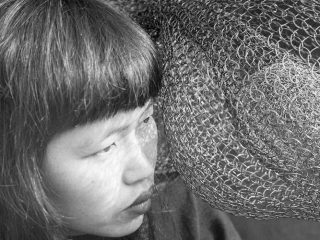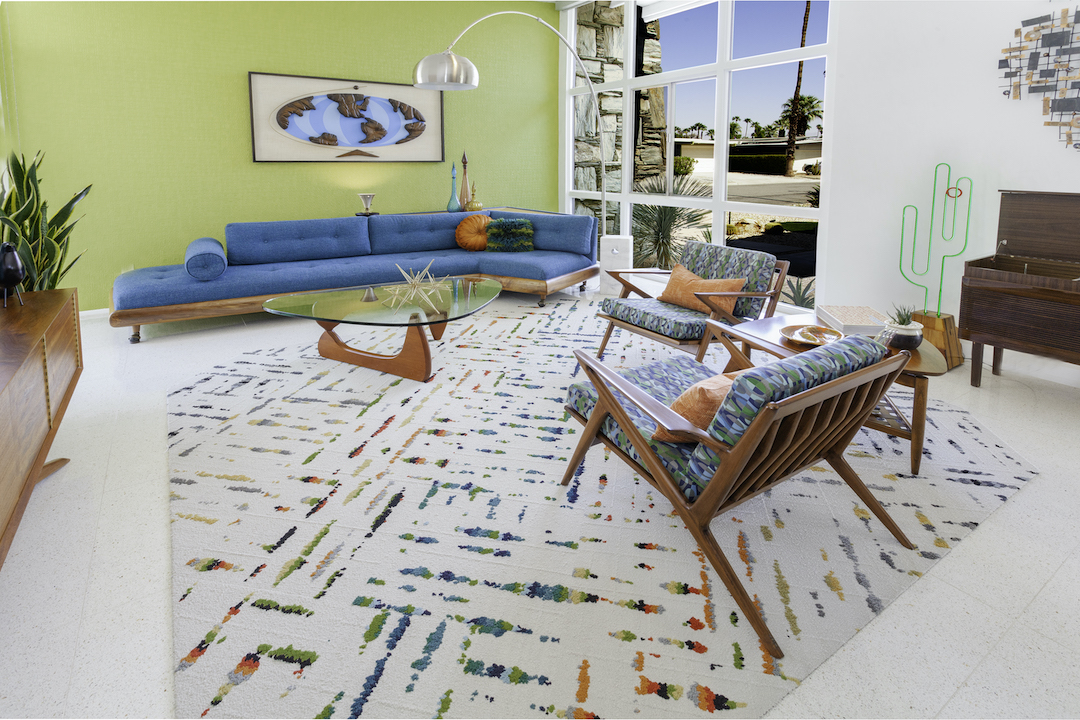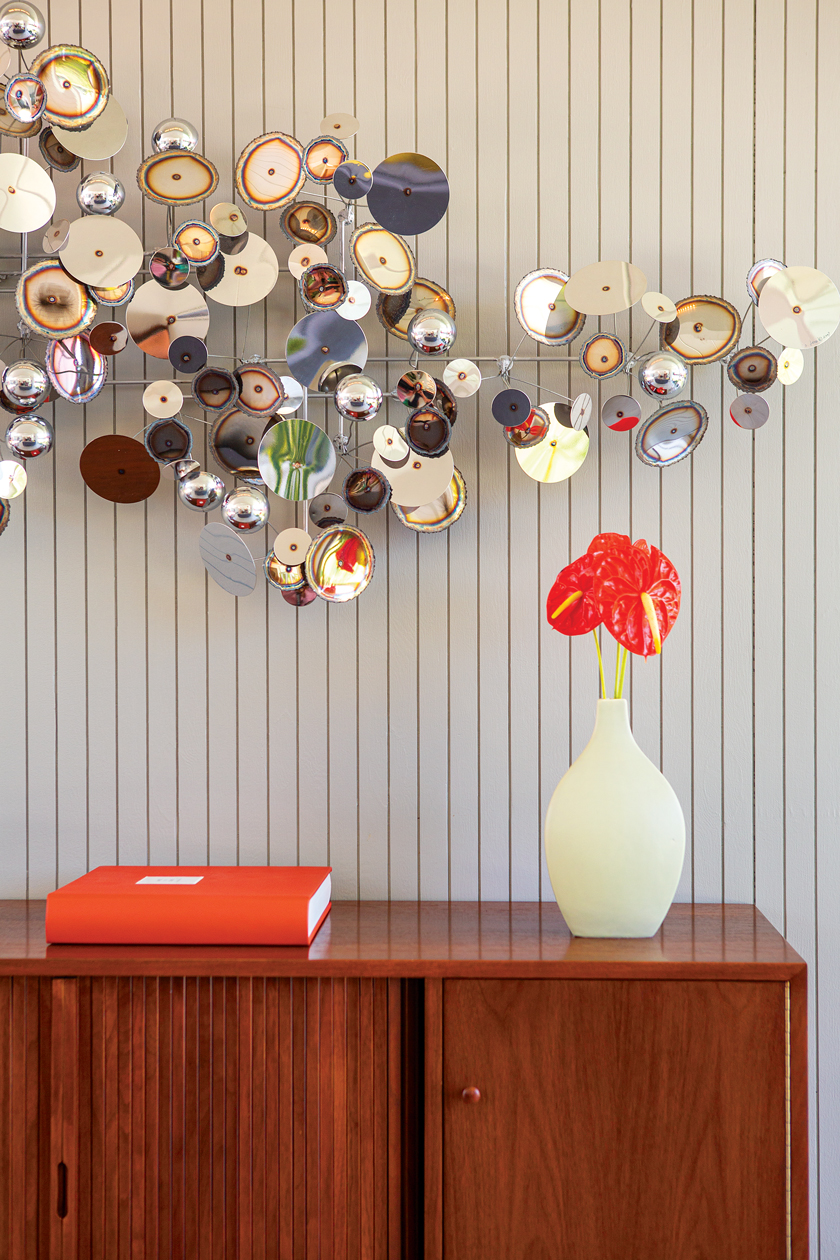May is AAPI (Asian American & Pacific Islander) Month. To celebrate, we’ve highlighted some Mid Century Modern and MCM-inspired architects and designers.
Learn more about each of these remarkable AAPI architects and designers of the mid century and those whose work today is continuing their legacy. A Noguchi coffee table, for instance, features prominently in the image above.

Isamu Noguchi
From gardens to his epnonymous coffee table to the Associated Press Freedom Frieze in the Rockefeller Center to the Akari light sculptures and more, Noguchi’s prolific career is a household name for MCM design aficionados. Born in Los Angeles, raised in Japan until the age of 13 and then back to the States again, Noguchi felt the events of WWII keenly. Even though he was living in New York at the time of the internment of Japanese Americans on the West Coast, he voluntarily joined an internment camp with hopes of implementing plans for art classes and gardens and swimming pools for detainees. His plan did not succeed, but after his release he went on to produce many of the works for which we know him today. Read more about Noguchi’s career here.

George Nakashima
Known for his organic use of materials, George Nakashima is another household MCM name. Unfortunately, he, along with his wife and two kids, was detained in an wartime internment camp, Camp Minidoka in Idaho. Even while essentially a prisoner, Nakashima learned about traditional Japanese carpentry under the guidance of Gintauro Hikogawa, another resident at Camp Minidoka. His work is influenced by spirituality and reverence for nature, and trees in particular. He wrote The Soul of a Tree, part memoir, part philosophy and part woodworking technique. Read on for more on George Nakashima here.

Ruth Asawa
Ruth Asawa was in high school when she and her family were also interred. Despite the difficult conditions, she managed to take up drawing. She went on to become an accomplished sculptor, most notably for her abstract, hanging looped wire sculptures. She married and became a mother of six. She was also an arts advocate and co-founded Alvarado School Arts Workshop, which worked with public schools to bring parents and professional artists to develop student creativity, and she served on the California Arts Council. “Art will make people better, more highly skilled in thinking and improving whatever business one goes into, or whatever occupation,” she said. “It makes a person broader.” Learn more about Ruth Asawa’s life and work by reading on here.

I. M. Pei
Ask for a list of famous modernist architects, and I. M. Pei will no doubt be near the top. This Chinese-American architect is perhaps most celebrated for designing the Louvre Pyramid, but his portfolio boasts numerous iconic projects from around the world–including the original World Trade Center in New York City. His design philosophy was, as Pei said, “Architecture is the very mirror of life. You only have to cast your eyes on buildings to feel the presence of the past, the spirit of a place; they are a reflection on society.” Read more about I. M. Pei here.
Contemporary MCM AAPI Practitioners

Christine Turknett is the principal designer of Breathe Design Studio and took the design lead on Atomic Ranch’s Project House Austin. Before her career as an interior designer, she studied Asian immigration stories. Influenced by mid century and Scandinavian styles, her vision is to help create home environments that encourage are clean and calm.

Atomic Ranch’s very own Brand Leader Jickie Torres speaks to her experience as a first generation Filipina American in this interview following the release of her book Atomic Ranch: Remodeled Marvels. As Atomic Ranch’s Brand Leader, she curates the brand’s ongoing selection and celebration of MCM. “My family left their country and almost all their possessions behind to come here and forge a better life for future generations,” Jickie says. “I’m fascinated by why and how this style came together and why that makes it so important to save and preserve—because where we live, how our homes are built and how we use them in a big part of anyone’s family history. To me it’s more than just incredible architecture and design. It means something. It represents a moment in time for people that’s worth keeping alive.” Read on here for the full interview.
To see more of Jickie’s work keeping MCM memories alive, subscribe to Atomic Ranch magazine!
And of course, don’t forget to follow us on Instagram, Facebook and Pinterest for more Atomic Ranch articles and ideas!












